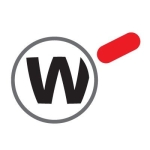What is our primary use case?
We are using the product in a small office to secure our network to configure the firewall settings to control incoming and outgoing traffic.
This includes setting up rules for allowing or blocking specific types of traffic.
We use intrusion prevention features to detect and prevent potential threats and attacks on your network.
It enables logging and monitoring features to keep track of network activity and identify potential security incidents.
With the solution, we can implement strong user authentication mechanisms to control access to your network resources.
How has it helped my organization?
The use of Check Point NGFW makes our business feel safer.
NGFWs typically include advanced threat prevention mechanisms, such as intrusion prevention systems (IPS), antivirus, anti-malware, and threat intelligence. These features help protect your network from a wide range of cyber threats.
NGFWs can integrate with user identity management systems, enabling more granular control over network access based on user identities. This is particularly important for enforcing security policies on a per-user basis.
What is most valuable?
The interface is user-friendly, and also they give you small training courses on the Coursera website to explain how to use the products.
The dashboard provides a quick overview of the security status, including key metrics, alerts, and recent events. This helps administrators get a snapshot of the network's security posture.
The ability to monitor network traffic and security events in real time is crucial. Check Point's interface often provides real-time visibility into network activity, making it easier to identify potential issues or threats.
What needs improvement?
Their products are pretty complete, and the explanations are very well done.
Check Point offers training and certification programs for administrators and security professionals. These programs help individuals develop the skills needed to effectively manage and secure networks using Check Point products.
Timely updates to security databases, firmware, and software are crucial for addressing new threats. Check Point's commitment to providing ongoing support ensures that organizations have access to assistance when needed.
For how long have I used the solution?
We have been using this solution for the last two years already.
What do I think about the stability of the solution?
The solution we use is pretty complete. For the moment, the stability is good enough for us.
What do I think about the scalability of the solution?
CkeckPoint has solutions for different sizes of companies. Therefore, the solution is scalable. The client has to choose the right solution for their needs. If you call the contact center, they can advise you on your options.
How are customer service and support?
We have not used technical support, up until now we haven't needed them.
How would you rate customer service and support?
Which solution did I use previously and why did I switch?
We used a normal antivirus on the endpoints previously. However, after we took a cybersecurity course, we understood that a bigger security solution was needed.
How was the initial setup?
The initial setup is easy. You just click through, next, next, next, and take some steps to make an account and do some basic setups. Everything basically works out of the box.
What about the implementation team?
We implemented the solution through a vendor team; they had well-trained technicians.
What was our ROI?
To feel safer in the online environment is the most important thing these days. Everything is online now. A solution like that makes it easier and safer for you to work and do things online.
What's my experience with pricing, setup cost, and licensing?
After researching what's available in the market, choose a product. Read reviews and watch demos to assess the user interface and learn what options the product offers.
Which other solutions did I evaluate?
We searched the market for months before we chose Check Point. There are many security solutions on the market, both for on-premises and on the cloud. We chose Check Point for the ease of use.
What other advice do I have?
The solution is perfect for us. That said, for each client, the needs are different.
Which deployment model are you using for this solution?
On-premises
Disclosure: I am a real user, and this review is based on my own experience and opinions.


















